
Stark Beauty: Images of Israel's Negev Desert
Negev Desert
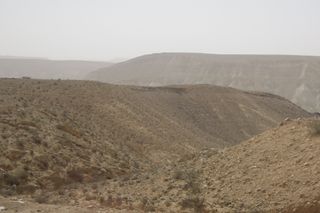
The Negev Desert region of Israel is harsh and unforgiving, yielding only about 4 inches (10 centimeters) of rain every year. And yet the breadth of life and human activity in the desert is stunning.
Excavations in the area show that the Nabataeans, an ancient people that ruled the region for a few hundred years beginning before 300 B.C., lived and farmed here; more recently, Israel's first Prime Minister David Ben-Gurion pushed for development of the Negev, and even spent the last 10 years of his life on a kibbutz in the desert.
Though there is still empty space aplenty, there is also ample agriculture and research into improving it, communities of Bedouins who have settled here, and more.
Experimental olive grove
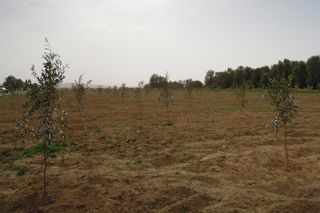
Here, a grove of young olive trees sits near Wadi Mashash. The grove along with a neighboring stand of acacia trees is an experiment, where runoff from the nearby streambed ("wadi" means dry riverbed) collects into the grove's soil. Even the one flood per year, and overall maximum of about 4 inches of rain, are enough to sustain these trees until next year's flood. [Driest Places on Earth]
There is also work on planting other crops like wheat between the trees, taking full advantage of the land and water that is available. And this has far-reaching implications: Desertification is happening all over the world, and some of the Israeli methods of halting the spread of the sand are being used in places like the Sahel, in Africa.
When I visited, I was treated to fresh olive oil from another nearby grove; these trees won't just hold off a desert, they'll yield a saleable product as well.
Mosque in Derijat
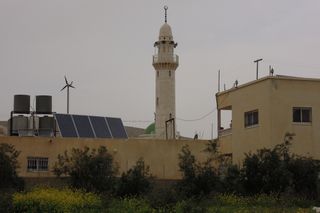
A small mosque in the equally small town of Derijat has a small wind turbine and solar panels on the roof. The town was home to a pilot project sponsored by the Israeli government involving the use of solar energy on a school, the mosque and theoretically on every home in the 800-resident village.
Makhtesh Ramon
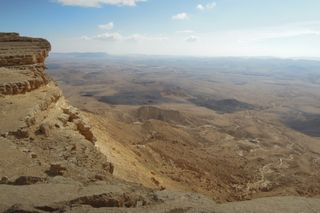
The Makhtesh Ramon is a geological formation unique to the Negev; 25 miles (40 kilometers) long and 1,600 feet (500 meters) deep, it is a stunning sight. Though it is known as a "crater," it is not actually an impact crater, but instead was formed by a receding ancient ocean and changing courses of rivers. There is only one town right next to the makhtesh, Mitzpe Ramon, which perches on the edge of the crater.
Life near the Dead Sea
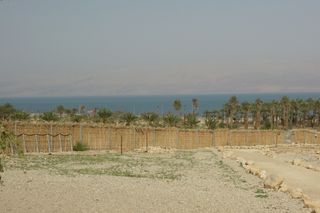
A grove of date palms sit with the Dead Sea in the background. Growing anything at the lowest point on earth, where much of the groundwater is salty, is a challenge. And the Dead Sea, which straddles the border of Israel and Jordan, is struggling to survive.
The sea's water levels have been falling for decades, and they are now dropping at a rate of more than 1 meter (about 3 feet) every year, thanks to a drastically diminished Jordan River flow.
Date palms are among the only trees seen here, but even those have issues: The receding water levels are causing thousands of sinkholes to open up, and some date palm groves have been abandoned because of the danger of sinkholes forming beneath them.
Bedouin solar
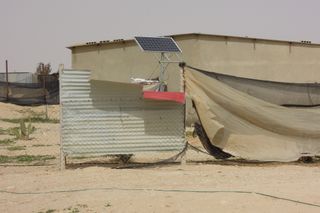
There are almost 200,000 Bedouin living in the Negev, about one third of the population, and half of them live in "unrecognized" villages without access to water or the electricity grid.
In Qasr al-Sir, a village that was recognized in 2003 but that is still struggling to modernize, solar panels are a marked contrast to the old and often run-down structures on which they sit. The free electricity they generate, though, is allowing the Bedouin here to focus their limited income on other things.
Desert ibex
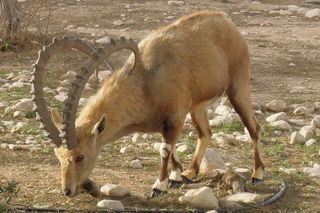
Wildlife is not exactly plentiful in the Negev, but it's there. Herds of ibex have apparently gotten used to humans in the town of Sede Boqer, where this ibex grazes it didn't seem to mind me standing about 8 feet (2.4 m) away.
Israel is also home to some stunning bird migrations; 500 million birds cross the country on their way from Europe to Africa every fall, and then head back north again in the spring.
Sign up for the Live Science daily newsletter now
Get the world’s most fascinating discoveries delivered straight to your inbox.
Desert winery
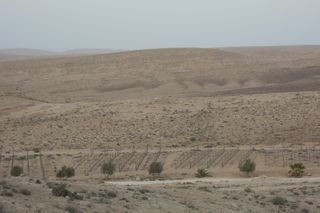
A view from above the Derech Eretz winery, where Daniel Kish makes about 5,000 bottles of wine each year.
The vines sprout from the same sand and crumbled rock that covers the region, fighting through drought and diminishing rainfall. [Harshest Environments on Earth]
Wine has made a big comeback in Israel, largely in the past two decades or so. In the Negev, drip irrigation techniques allow grapes to grow where otherwise they couldn't.
At Derech Eretz, Kish wants to start producing white wines as well as reds, a more difficult enterprise in the desert due to required lower fermentation temperatures.
Sunset over the wires
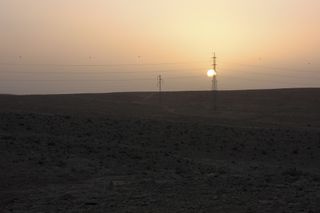
Israel is an impressively wired country. Even in the middle of the desert, cell phone signals pretty much never disappear. Granted, Israel is about the size of New Jersey, but anyone who has ever dropped a call somewhere along the Jersey Turnpike knows connecting an area that size isn't trivial.
Zin Canyon
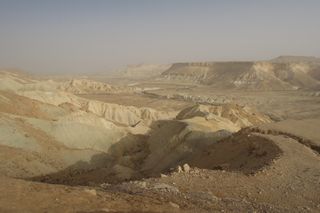
This stunning valley known as Israel's Grand Canyon cuts through southern Israel and would lead you all the way to Petra, in Jordan. [Gallery: One-of-a-Kind Places on Earth]
Ben-Gurion University of the Negev's Sede Boqer campus sits on the edge of the canyon, and David Ben-Gurion is buried alongside his wife within steps of the canyon wall.
